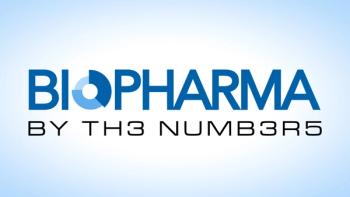
Industry Experts Probe CNPV Impacts: Part I
Key Takeaways
- The CNPV program reduces review times, necessitating strategic shifts in market access, manufacturing, and regulatory compliance for companies.
- Early investment in CMC strength and supply chain resilience is essential to mitigate risks associated with compressed review timelines.
Five leaders from across the bio/pharma sector explore the opportunities and challenges posed by FDA’s CNPV pilot program.
Editor’s Note: Opinions expressed herein do not necessarily reflect those of the firms/companies for which the speakers work.
Check out additional coverage and industry expert perspectives in "
And check out "
In mid-November 2025, PharmTech Group held a discussion with five bio/pharmaceutical industry experts to better understand the impacts—both known and potential—of the FDA Commissioner’s National Priority Voucher (CNPV) pilot program (1). The program offers an "unprecedented opportunity to reduce drug and biological product application or efficacy supplement review times from 10-12 months to just 1-2 months" (2,3). While FDA Commissioner Marty Makary, MD, MPH, called CNPV a “common-sense approach” that harnesses a "tumor board style" discussion to deliver "more cures and meaningful treatments to the American public” (3), experts in public health and regulatory policy (1,4-6), warn that this acceleration may come at the expense of established safety standards and fiscal responsibility. Following is a recap of the first half of the discussion, moderated by Eric Langer, president and managing partner, BioPlan Associates. Look for Part II, scheduled for posting on Monday, Nov 24.
Langer: How do companies shift their internal playbook to ensure aligned market access, manufacturing, supply chain, labeling, pricing, and post-approval readiness?
Aloka Srinivasan, principal and managing partner at Raaha LLC: I have helped one of the voucher winners with their application and paperwork, and now with getting them ready for the project.What is most important for generics and biosimilars selected to receive a voucher is careful planning… Reviews under this program will occur on a rolling basis with increased interaction between the sponsor and the review team. This is a paradigm change, especially for generics, that needs better understanding.
Note that the FDA expects that chemistry, manufacturing, and controls (CMC) information and labeling will be provided at least 60 days before the formal submission. Thus, in the case of some generic products, CMC information could be provided many months in advance, and bioequivalence may be the only major remaining issue to address after the formal submission, and for certain injectable products, even that may not be necessary. Ultimately, these reviews will resemble “first-cycle approvals,” the only difference being that the Agency works closely with the sponsor to resolve all issues well before the actual submission is filed.
Therefore, the reduction in formal review time does not imply that product development, marketing preparation, or post-approval planning must also be compressed proportionally. Instead, sponsors will need to advance market access, pricing, and post-approval readiness activities in parallel, starting with perhaps the first meeting with FDA on the requirements of the application and plausible submission timelines, while maintaining ongoing communications with the FDA review team regarding the progress of the project.
Metin Çelik, PhD, president, Pharmaceutical Technologies International, Inc (PTI): Market access strategy, pricing scenarios, health economics and outcomes research models, and payer engagement must begin during late-phase clinical development—not after filing. Labeling strategy and competitive positioning require early alignment, because the opportunity for iterative dialogue with FDA becomes limited. Manufacturing and supply chain readiness (tech transfer, process performance qualification, control strategy, domestic/dual sourcing, quality system robustness) must be essentially complete at submission. Teams need to operate through integrated readiness “war rooms” with weekly cross-functional reviews across CMC, regulatory, safety, medical, commercial, and supply chain.
In this environment, proactive inspection preparation becomes mission critical. This is where systems like my PAIex (Pre-Approval Inspection Expert System) become extremely valuable, as they provide structured risk assessments, documentation frameworks, and predictive readiness analytics aligned with FDA expectations. With a potential 30–60-day review, there is no time to fix compliance gaps once the file is submitted.
Langer: What are the regulatory/risk implications of compressed review timelines?
Srinivasan: Most drugs receiving vouchers appear to be generics. I am not aware of such products having received vouchers in the past. However, FDA has substantial experience conducting expedited reviews for numerous new chemical entities that received vouchers. The recent reorganization of the review divisions was designed to ensure that expert teams have the necessary depth of experience to meet expedited review timelines, no matter whether it is for a generic, biosimilar or biologic.
As stated, many of the products awarded vouchers are already generic, and if you read the program carefully, you will see that a company who has received the voucher can move at its own pace. The purpose of these vouchers is to incentivize domestic manufacturing of certain critical drugs without cutting corners related to product development or quality. FDA is supporting domestic manufacturing by providing sponsors with enhanced opportunities for communication before a “formal” submission and thus reducing the approval time significantly for such products.
What sponsors need is a shift in mindset to take advantage of this support. They should treat these pre-submission interactions as “information requests” or "discipline-specific" inquiries, which they are used to getting after the submission of the dossier, and as product and process development progresses, adjusting expectations for commercial timelines according to where they stand with the submission timeline. In these cases, we need to remember that by the time the new drug application (NDA), biologics license application, abbreviated NDA, or related supplements are submitted, both the sponsor and the Agency should already have resolved key risks, making approval largely a formality.
Henrik Johanning, senior vice president, Quality & Strategy, Epista Life Science: From a risk and compliance perspective, compressed timelines amplify every weakness in a company’s quality risk management (QRM) framework. With less time for iterative review and data verification, risks can easily migrate downstream, into supply chain, labeling, or post-market surveillance. The best-prepared organizations use QRM not only as a compliance tool, but as a decision-making compass, identifying which activities are critical to product quality and patient safety and which can safely be accelerated or deferred.
In recent history, we saw similar dynamics during the rapid COVID authorizations: speed is achievable, but only when quality systems, digital validation, and documentation discipline are built to scale with it. Companies that invested early in these capabilities entered the market faster and more safely.
Çelik: Compressed reviews shift the risk landscape... There is more reliance on post-market commitments, including safety studies, registries, or risk evaluation and mitigation strategy adjustments, because uncertainties cannot be resolved during the short review. There is also greater operational exposure around scale-up, process robustness, and supply reliability, especially for biologics or GLP-1-class products. Companies mitigate these risks by:
- Investing early in CMC strength and supply chain resilience.
- Preparing post-approval study proposals in advance to align expectations.
- Using digital tools, modeling, AI, and structured inspection-readiness systems, such as PAIex, to anticipate and close gaps before filing.
References
- FDA.
Commissioner's National Priority Voucher (CNPV) Pilot Program . Accessed Nov 18, 2025. - Dorsey, D; Holland, S.
A Tale of Three Vouchers . BHFS.com. Sept 29, 2025. - FDA.
Commissioner's National Priority Voucher (CNPV) Pilot Program . Accessed Nov 18, 2025. - Doctors for America.
FDA Commissioner’s National Priority Vouchers Will Endanger Americans . Press Release. June 20, 2025. - Eglovitchm, J.
Questions Remain as FDA Opens Submissions for New Priority Voucher Program . RAPS.org. July 24, 2025. - Emond, S; Ollendorf, D.
How to Make One Line in the FDA Commissioner's New Drug Review Program Into a Force for Affordable Access for Patients . Health Aff Sch. 2025;3(10):qxaf182. - FDA.
FDA Awards Second Batch of National Priority Vouchers . Press Release. Nov 6, 2025.
Newsletter
Stay at the forefront of biopharmaceutical innovation—subscribe to BioPharm International for expert insights on drug development, manufacturing, compliance, and more.





